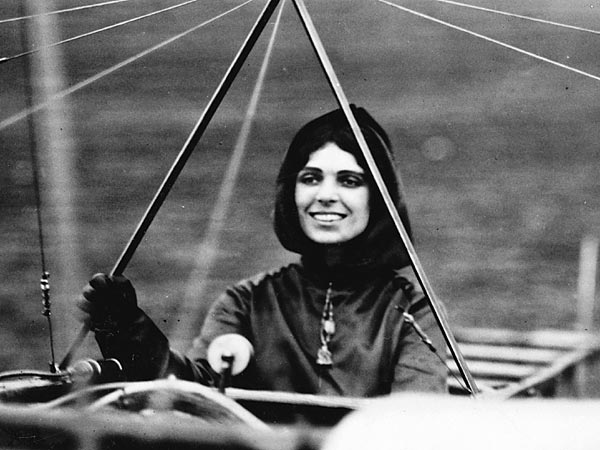On April 16th, 1912, the world witnessed a groundbreaking moment in aviation history as Harriet Quimby achieved a remarkable feat: she became the first woman to pilot an airplane across the treacherous waters of the English Channel. In an era when flying was still a daring and largely male-dominated pursuit, Quimby’s bold and pioneering spirit blazed a trail for future generations of female aviators.
Born in Maywood, Michigan, in 1875, Harriet Quimby was a woman ahead of her time. With a passion for adventure and a thirst for independence, she pursued a career in journalism, eventually becoming a successful writer and columnist for publications such as Leslie’s Illustrated Weekly and The New York World. However, it was her fascination with aviation that would ultimately propel her into the annals of history.
Quimby’s interest in flying was sparked by the burgeoning aviation scene of the early 20th century. Inspired by the exploits of pioneering aviators like Wilbur and Orville Wright, she resolved to take to the skies herself. In 1911, she made history by becoming the first licensed female pilot in the United States, earning her pilot’s certificate from the Aero Club of America.
With her pilot’s license in hand, Quimby set her sights on even greater challenges. The English Channel, with its notoriously unpredictable weather and treacherous currents, had long been a formidable barrier for aviators seeking to prove their mettle. Despite the risks, Quimby was undaunted. She saw the crossing as an opportunity to make her mark on aviation history and inspire women around the world to pursue their dreams.
On the morning of April 16th, 1912, Quimby embarked on her historic journey from Dover, England, bound for Calais, France. Piloting a French-built Bleriot XI monoplane, she soared into the skies with determination and courage. Battling strong winds and turbulent conditions, Quimby navigated her way across the Channel with skill and precision.
After a flight lasting just under an hour, Quimby touched down safely in Calais, greeted by cheering crowds and jubilant supporters. In crossing the English Channel, she had not only shattered gender barriers but also demonstrated the potential of aviation as a means of transportation and exploration.
Quimby’s achievement garnered international acclaim, earning her a place in the pantheon of aviation pioneers. Her daring flight inspired countless women to pursue careers in aviation, paving the way for future trailblazers such as Amelia Earhart and Bessie Coleman. Quimby herself continued to push the boundaries of flight, setting new records and inspiring audiences with her aerial stunts and demonstrations.
Tragically, Quimby’s life was cut short in 1912 when she was killed in a flying accident at the age of 37. However, her legacy endured, serving as a beacon of hope and inspiration for generations of female aviators to come. Today, Harriet Quimby’s name is synonymous with courage, determination, and the enduring spirit of adventure. Her historic flight across the English Channel remains a testament to the power of perseverance and the limitless potential of human achievement.












Tim Putnam
This is cool stuff To know That I wouldn’t get anywhere else
DBC
Interesting that a Yooper from the rustic Upper Peninsula of Michigan would be the first woman to fly the Channel.